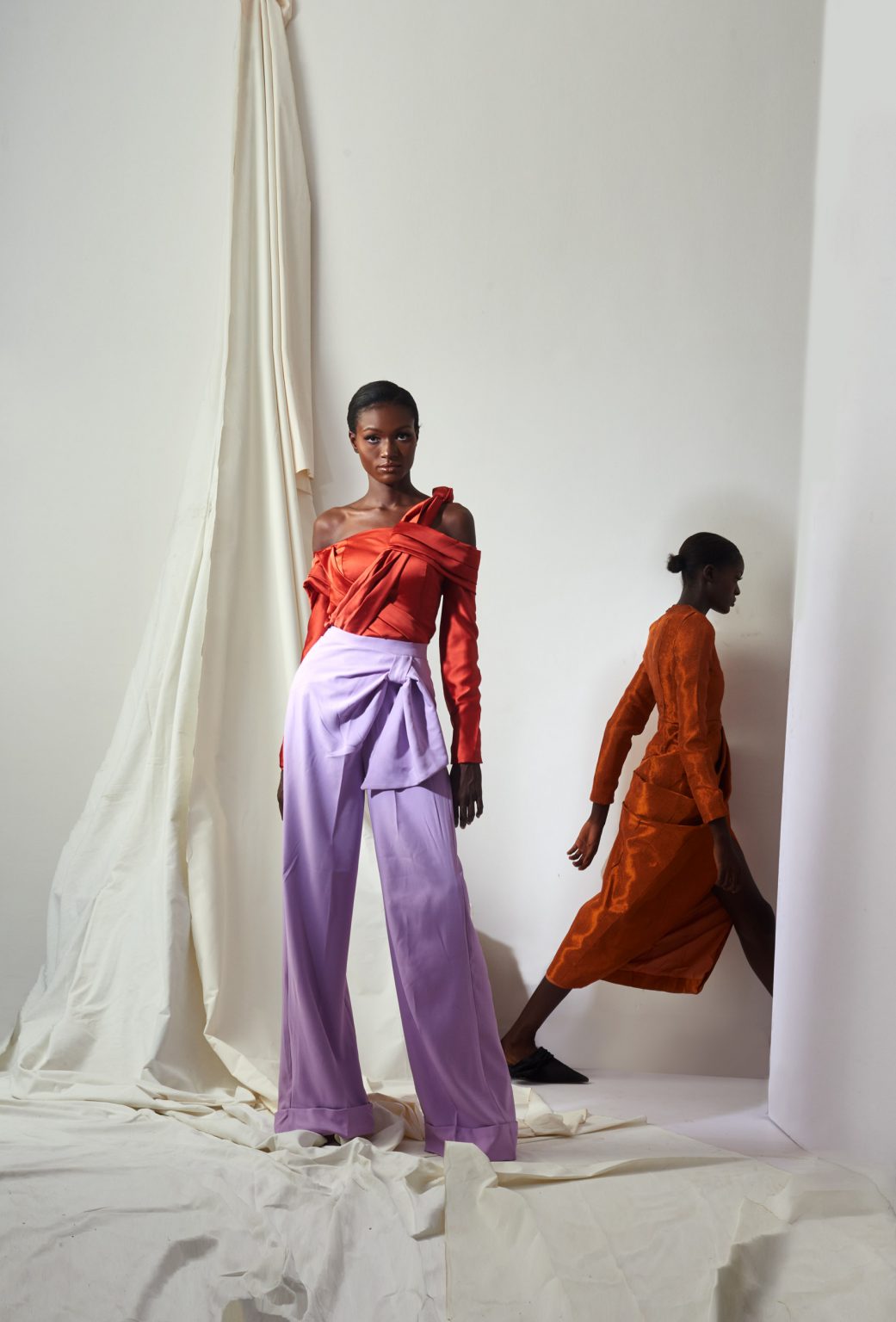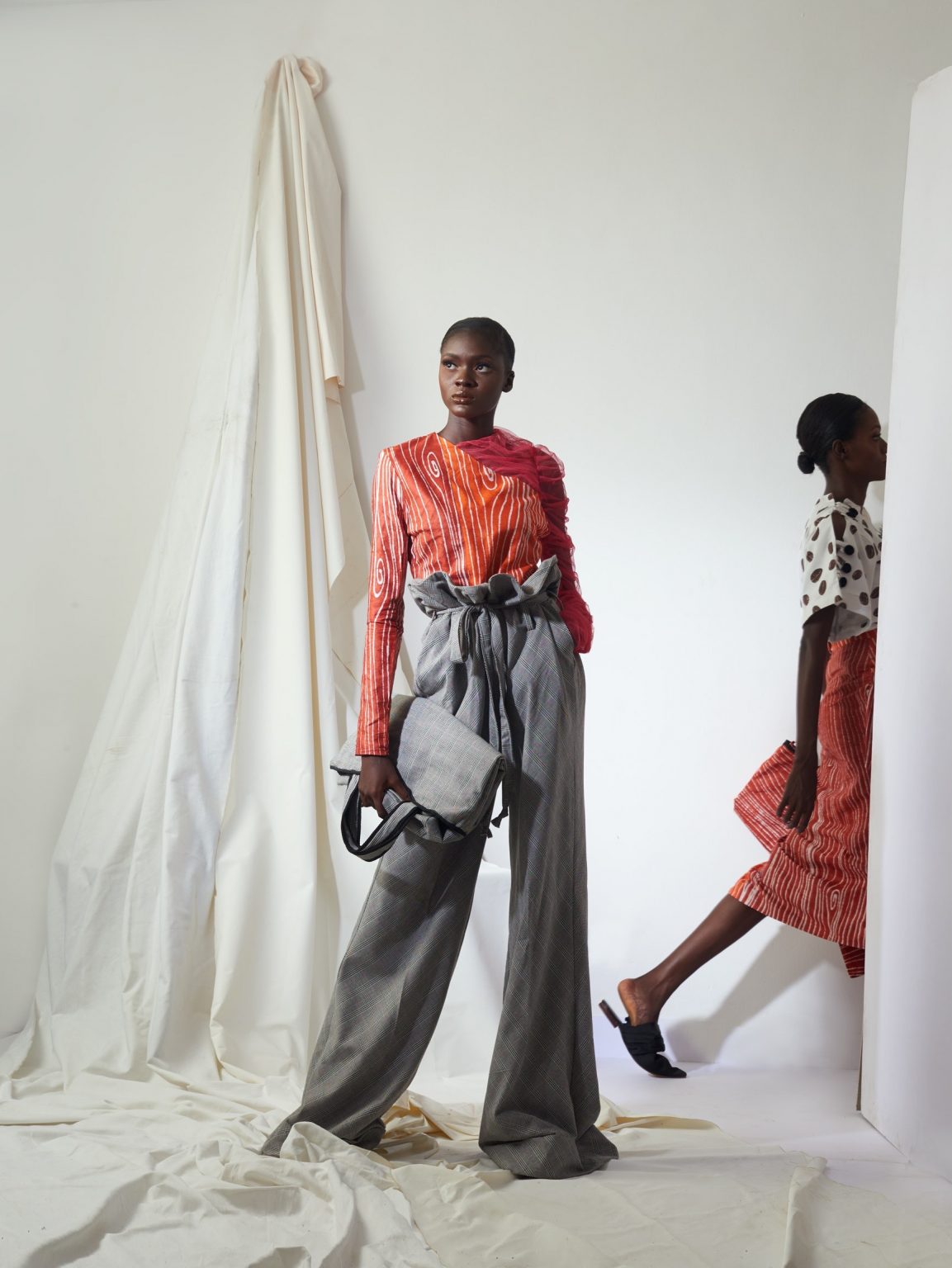My grandparents originally from Delta state, lived in Benin City. I was always fascinated by how exposed they were. Their stories fuelled my fascination with the Bini people and their culture. In recent years I’ve been inspired by the work of Solomon Osagie Alonge. The world that Alonge (1911-1994) documented away from official ceremonies, rituals, and events was filled with stylish and free-spirited young men and women who had stepped in front of his lens at the local studio he built. Alonge’s work was an extensive and impressive visual record of Nigeria’s rising social and cultural class. He was a founding member of the Benin Social Circle, a group of businessmen, leaders and the “educated elite.”
For this collection, we were very much inspired by Alonge’s subjects and also the richness of Bini culture and tradition. His subjects wore a mix of western and traditional bini attire and they made these ensembles their own. Those in the upper echelon of society who could afford to do so would come dressed in their best outfits to have their portraits taken. Staring straight into Alonge’s lens, each subject had the power to represent himself or herself in the manner of their own choosing, a significant statement at a time when photos of Africans were often filtered through the gaze of a non-African photographer or anthropologist.




